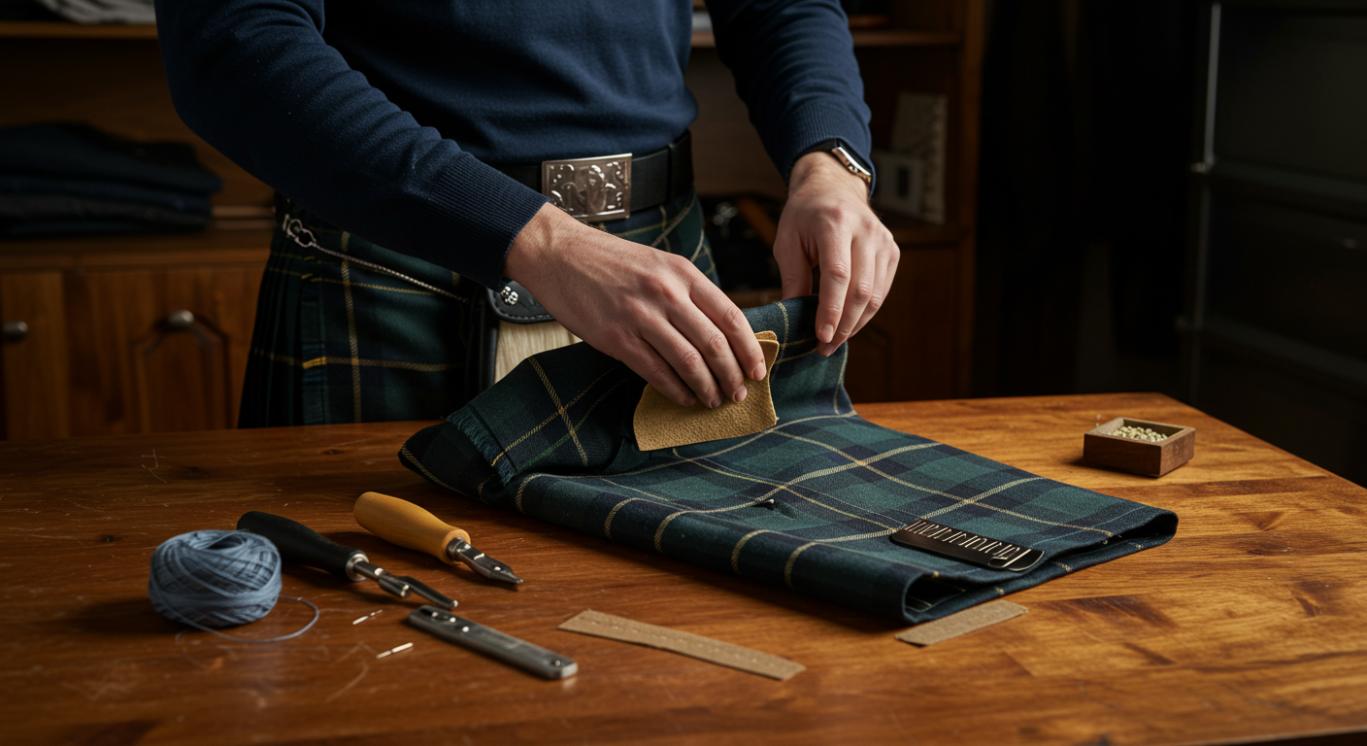How to Care for and Maintain Your Men Kilts: Cleaning, Storage, and Repairs

Kilts are a symbol of tradition, masculinity, and pride. Whether you wear your men's kilt for formal events, casual outings, or cultural ceremonies, proper care and maintenance are crucial to ensure your garment remains in excellent condition. Unlike regular clothing, kilts, particularly woolen or leather varieties, require specific cleaning, storage, and repair methods to preserve their integrity and longevity. This blog will guide you through everything you need to know to care for your men kilt, covering cleaning techniques, storage tips, and repair advice to keep your kilts for men looking its best.
Understanding Your Men Kilts Fabric
The first step to proper care is understanding the fabric your kilt is made from. Different materials require different care methods, so it's essential to recognize the fabric type before cleaning or repairing.
Wool Kilts: Traditional woolen kilts are common, especially for formal occasions. Wool is durable but sensitive to improper care. Wool kilts should be dry cleaned to avoid shrinking or damaging the fibers. These kilts also hold a rich heritage, so maintaining their authenticity is vital.
Synthetic Fabric Kilts: Synthetic or polyester kilts are often lighter, more affordable, and easier to maintain than wool. These kilt men can typically be machine-washed on a gentle cycle. Still, it's essential to follow the care label for specific instructions.
Leather Kilts: Leather kilts are a more modern and trendy alternative. While they exude style and toughness, leather requires specific attention. It's essential not to submerge leather kilts in water. Instead, clean them using a damp cloth and mild leather cleaner. Never dry them in direct sunlight or use a heat source, which can cause the material to crack or fade.
Understanding the fabric of your men kilt will help guide your next steps in cleaning and care.
Cleaning Your Kilt: Step-by-Step Guide
Kilts are made from quality fabrics and deserve the utmost care when cleaning. Here's a detailed guide on how to keep your kilt clean:
Dry Cleaning vs. Handwashing: Dry cleaning is usually the best option for wool and other delicate fabrics. This method avoids the risks of shrinking or losing the kilt's shape. When choosing a dry cleaner, ensure they specialize in traditional garments like kilts to ensure the proper care of your piece.
For synthetic or machine-washable fabrics, handwashing with cold water is ideal. Use a mild detergent and avoid wringing the fabric, which can distort its shape. Lay the kilt flat to dry, and never hang it, as this can lead to stretching.
Cleaning Leather Kilts: Leather kilts require a more delicate approach. Instead of water, use a leather cleaner specifically formulated for clothing use. Apply the cleaner with a soft cloth, working in small sections. Never soak the leather, and let it air dry naturally, away from direct heat or sunlight. To restore suppleness, you can use a leather conditioner periodically.
Removing Stains: Kilts, especially those worn outdoors, are prone to stains from food, dirt, or mud. Address stains as soon as possible to avoid permanent damage. For food stains, gently blot the area with a damp cloth, carefully not to rub the stain into the fabric. For mud, let it dry before brushing it off gently. If a stain persists, seek professional cleaning services to ensure the stain is removed properly.
Proper Storage for Your Kilt
Proper storage is key to maintaining your man kilt shape and fabric. The following tips will help preserve your kilt, whether you wear it regularly or only for special occasions.
Hanging or Folding: If you wear your kilt often, hanging it on a wide hanger is the best option. It prevents creases and helps the fabric retain its pleats. Choose a padded hanger for kilts made of wool or heavier fabrics to prevent any weight from stretching the fabric.
If you only wear your kilt occasionally or for seasonal use, fold it carefully and store it in a cool, dry space. Avoid cramming your kilt into a drawer or closet, as this can distort the fabric. Make sure it's folded neatly to preserve the pleats and overall structure.
Protecting Your Kilt from Dust and Damage: When storing your kilt in the long term, consider investing in a garment bag to protect it from dust and potential damage. A breathable garment bag ensures air circulates the fabric, preventing moisture buildup that could cause mildew or odors.
Seasonal Storage: For those who only wear their men's kilt seasonally, store it properly when not used. Before storing it, clean the kilt thoroughly and let it air out. Store it in a cool, dry place away from sunlight to avoid fading or fabric degradation. Place mothballs or lavender sachets inside the garment bag to prevent pests from damaging the fabric.
Repairs: Fixing Common Kilt Issues
Even with proper care, kilts may eventually face wear and tear. Fortunately, many common kilt issues can be easily repaired.
Repairing Tears and Holes: If your kilt suffers a small tear or hole, you can often repair it with a needle and thread. Use a thread that matches the fabric's color and carefully sew the tear, ensuring the stitches are hidden. For larger damage, consult a professional kilt maker or tailor who can perform a more thorough repair.
Fixing the Pleats: Pleats are essential to the kilt's aesthetic and structure. If the pleats come undone, you can re-press them by lightly dampening the fabric and using an iron on a low setting. Always use a press cloth between the iron and the fabric to avoid direct heat.
Mending the Waistband or Buttons: If the waistband or buttons of your kilt become loose or damaged, they can be easily replaced. A tailor can help sew on new buttons or adjust the waistband for a better fit. Alternatively, you can purchase replacement buttons or fix the waistband with a needle and thread.
Seeking Professional Help: When in doubt, don't hesitate to visit a professional tailor or kilt maker specializing in traditional garments. They can repair your kilt properly without compromising its look or fit.
Conclusion
Kilts are more than just garments; they symbolize culture and tradition. By following these care, cleaning, storage, and repair tips, you can ensure your men kilt stays in excellent condition for years. Proper care maintains the kilt's appearance and longevity, allowing you to enjoy this iconic garment for generations.
Whether you wear your kilt for special occasions or as a daily outfit, investing the time and effort into maintaining it will enhance your overall experience and allow you to wear it with pride. Keep your men kilt clean, stored correctly, and repaired as needed, and it will remain a cherished part of your wardrobe for many years to come.


